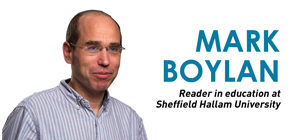Education blogger @thatboycanteach explains what we can learn from studying the 2016 Key Stage 2 SATs results
After the release of RAISEonline’s QLA data, teachers, Maths coordinators, and SLT alike will have scrambled to analyse the initial report on 2016s maths SATs results. It’s a resource with huge potential, offering ways for us to reconsider the effectiveness of our teaching and learning strategies by showing us what our pupils didn’t learn.
However, like many of its kind, it can be difficult to interpret. In short – it is a slog. So which questions do the nation’s 10 and 11 year olds seem to be struggling with most?
Below is a brief appraisal of where pupils fared worst, and why.
Let’s begin with the KS2 SATs reasoning tests – which account for 70 out of 110 marks and cover a range of curriculum objectives from years 3 to 6.
1. Pupils struggle to problem solve
The four most poorly answered questions were problem solving in nature, requiring a child to be able to approach several mathematical facts while using a variety of strategies. This multi-tasking proved troublesome for pupils, particularly question 17 from paper two, where pupils had to halve, use inverse operations and work with decimals.

This all points to an increased need for fluency between areas of the maths curriculum, and greater pupil understanding of how they interlink.
2. Comprehension is crucial
Some problem solving questions required a high level of comprehension; some asked pupils to provide a written explanation or rationale. Though tests have relied less in recent times on vocabulary-laden questions, these do still feature; question 20 on paper two and question 9 on paper three proved to be some of the most poorly answered.
Using a ‘literacy across the curriculum’ approach and teaching students that resilience and perseverance are key, may help them find their way through the paragraph and towards a correct answer.
3. Practice multi-step mental maths
Nationally, when asked to perform four – individually simple – mental mathematics steps, a large proportion of pupils struggled. Question 4 on paper three in particular demonstrated how answers were often incorrect simply because pupils did not follow all four steps.
Exposing pupils to a greater range of question types and multiple-step mental maths problems should help improve versatility and produce more correct answers.
4. Teach time management
Three-quarters of the most poorly answered questions nationally were the later questions of each test. While these questions mostly focused on more difficult year 6 level objectives, the report suggests that some of the questions were answered poorly because they came at the end of the test.
As such, an emphasis should be placed on pupils working quickly and efficiently enough to reach the final questions with both the time and energy to spare. Here exam training and time management could make the crucial difference in answering correctly.
Next is the arithmetic paper, worth 40 marks. Fortunately it is a more straightforward affair, with only four questions answered incorrectly by more than 50% of pupils and an encouraging 25 questions answered correctly by over 70% of pupils. However there are still areas for improvement.
5. Offer a range of numbers
Questions 28 and 29 required pupils to divide numbers of up to four digits by a two-digit whole number. Neither question featured a remainder yet both questions were poorly answered. The numbers in question were 29 and 43. The message is clear: when setting practice division questions it is important to provide a wealth of numbers, from high to low, or we are setting students up to fail.
6. Order of operations, that’s an order!
The final question of the test asked students to carry out a calculation involving both subtraction and division: (60 – 42 ÷ 6 =). Forty-five per cent of pupils failed to answer correctly, highlighting the order of operations as an area for improvement in the coming months.
7. Fractions and decimals: beyond baby-steps
Unsurprisingly, multiple-step questions also featured some of the lowest numbers of correct answers nationally. Fractions and decimals were the worst offenders, as the largest group of questions to be answered incorrectly when combined with addition, subtraction, division, or multiplication. Other questions involving calculations with fractions – when not combined with other forms of operation – were answered well (e.g. question 24).
Clearly, where questions involve multiple steps, work must be done on fractions and decimals to prepare for future exams.
For more insights, see this blog post on Third Space Learning.
Thatboycanteach is a primary school leader and blogger in the north of England







Your thoughts